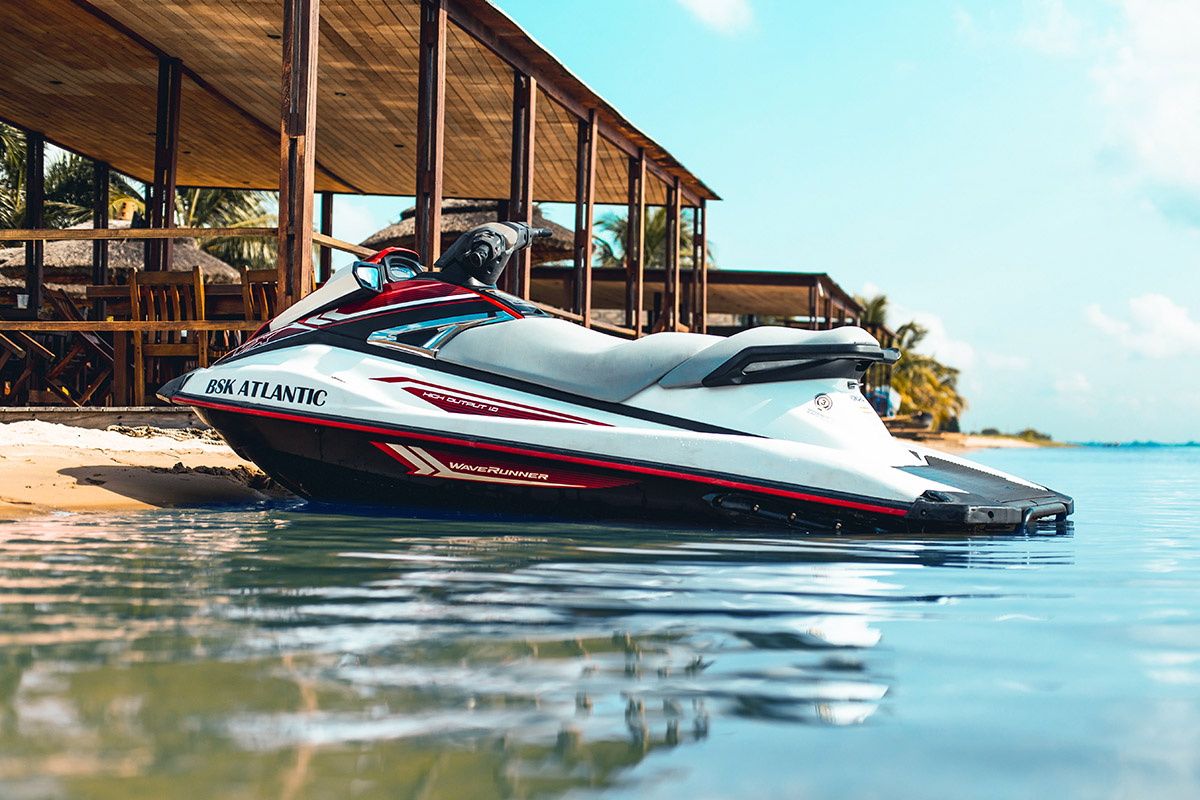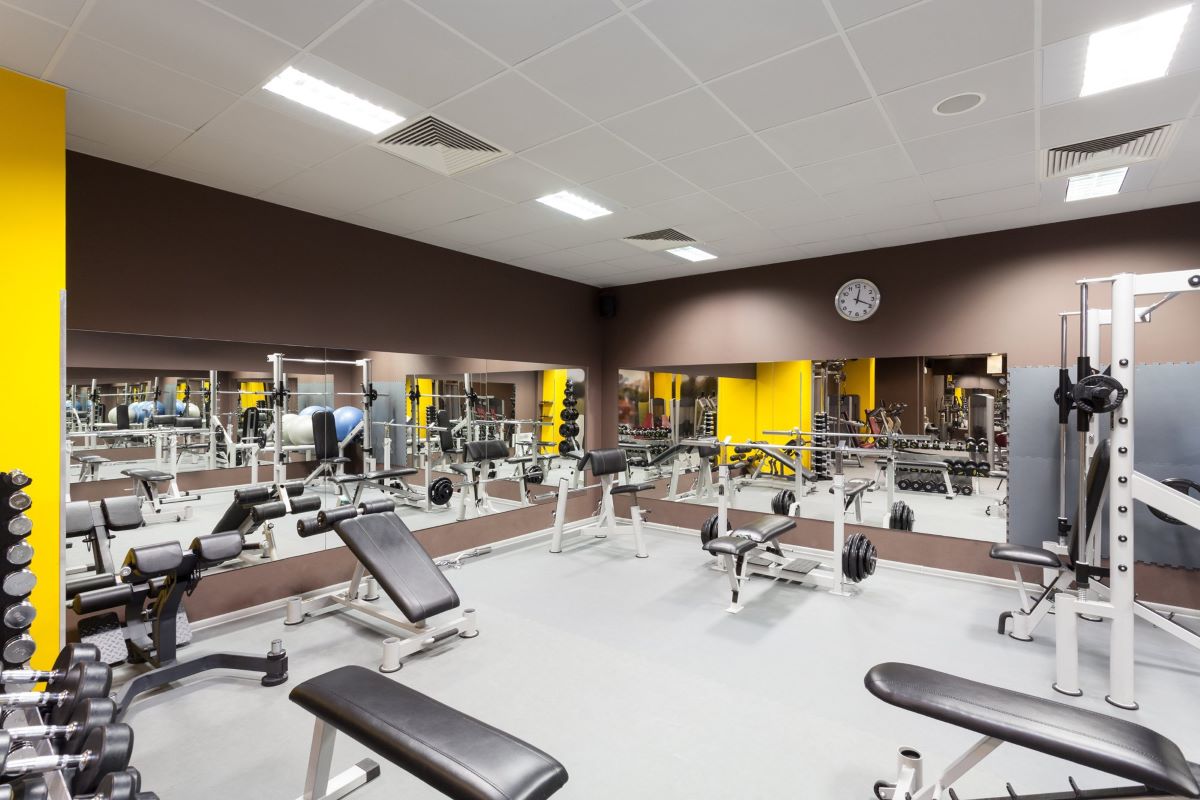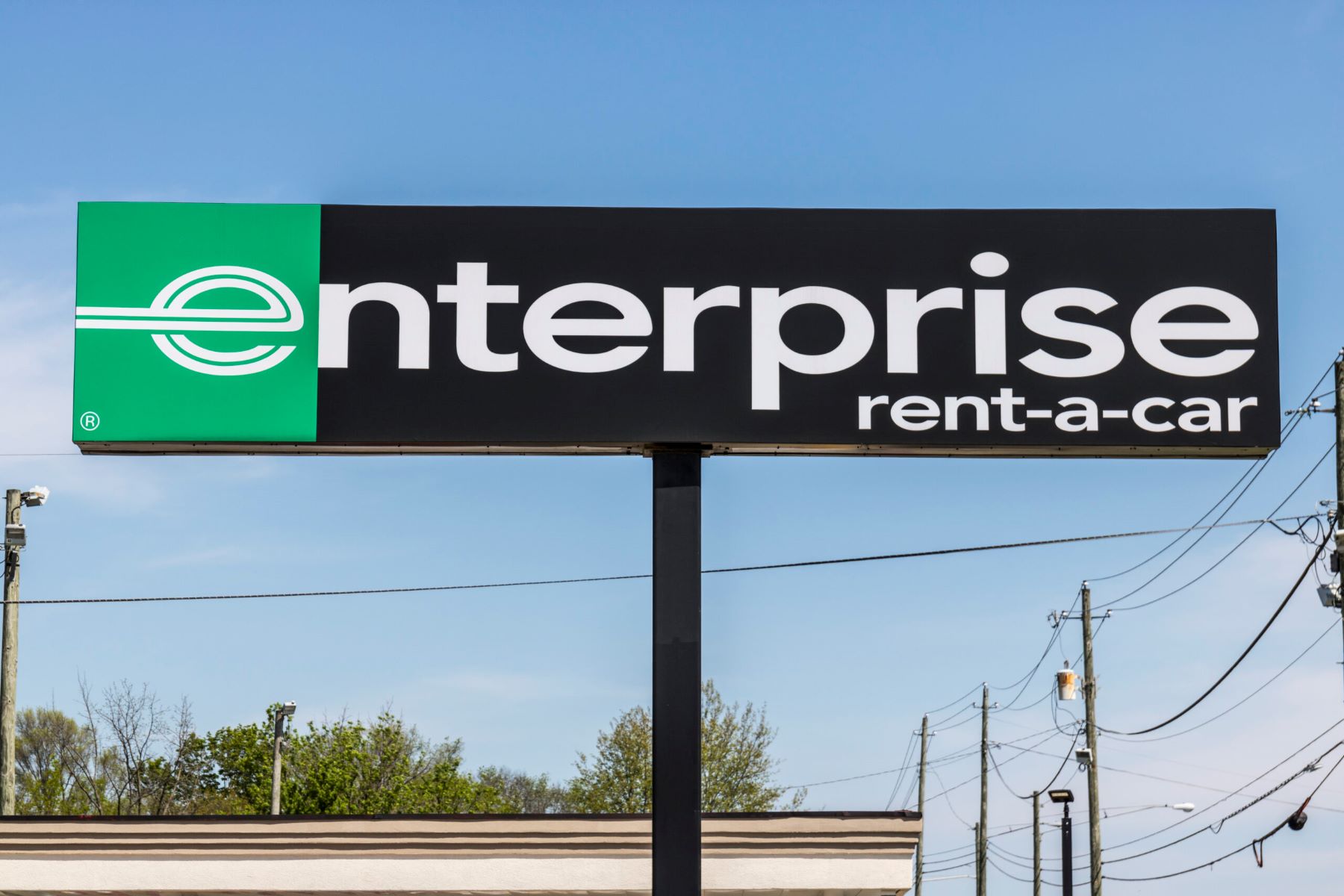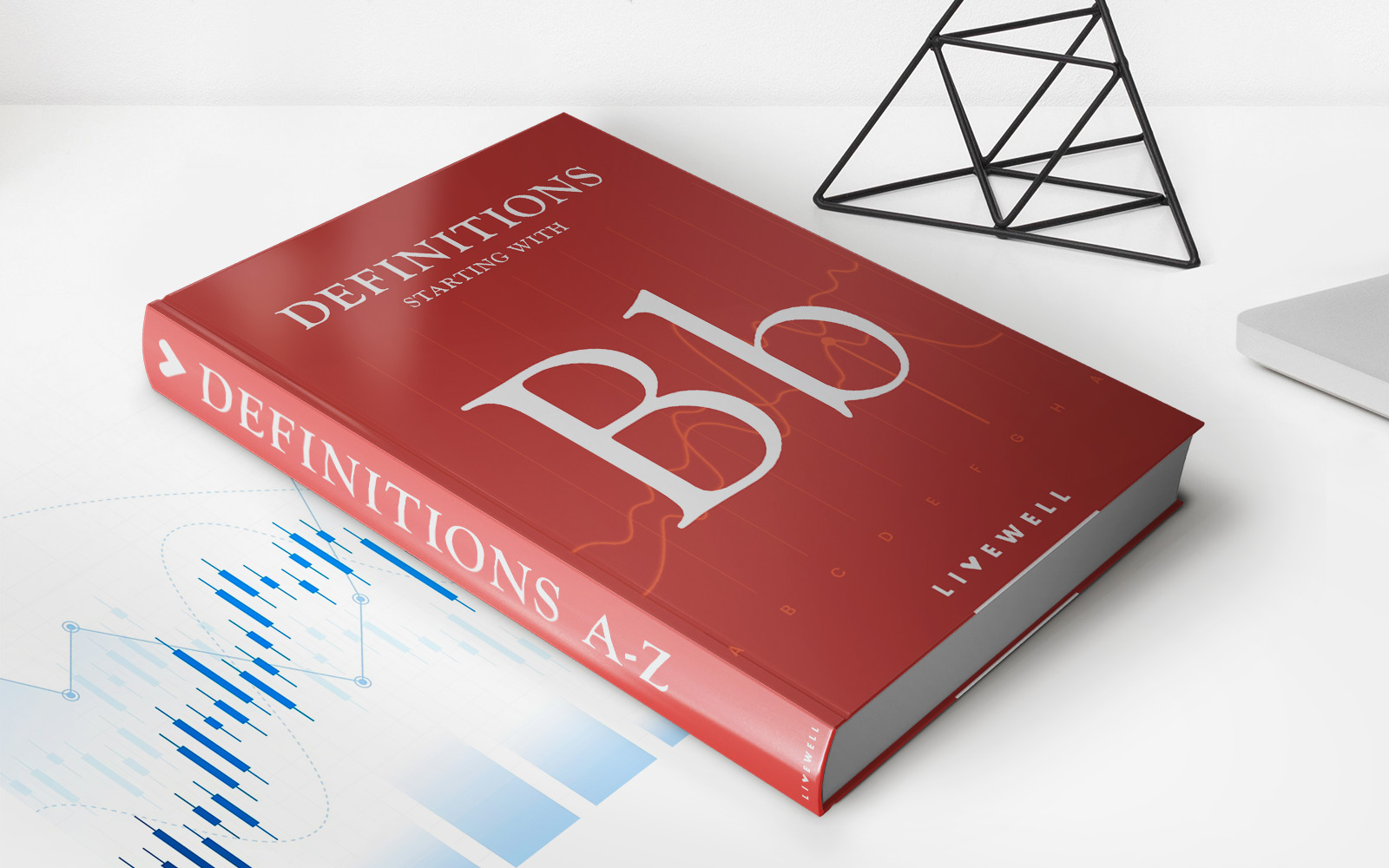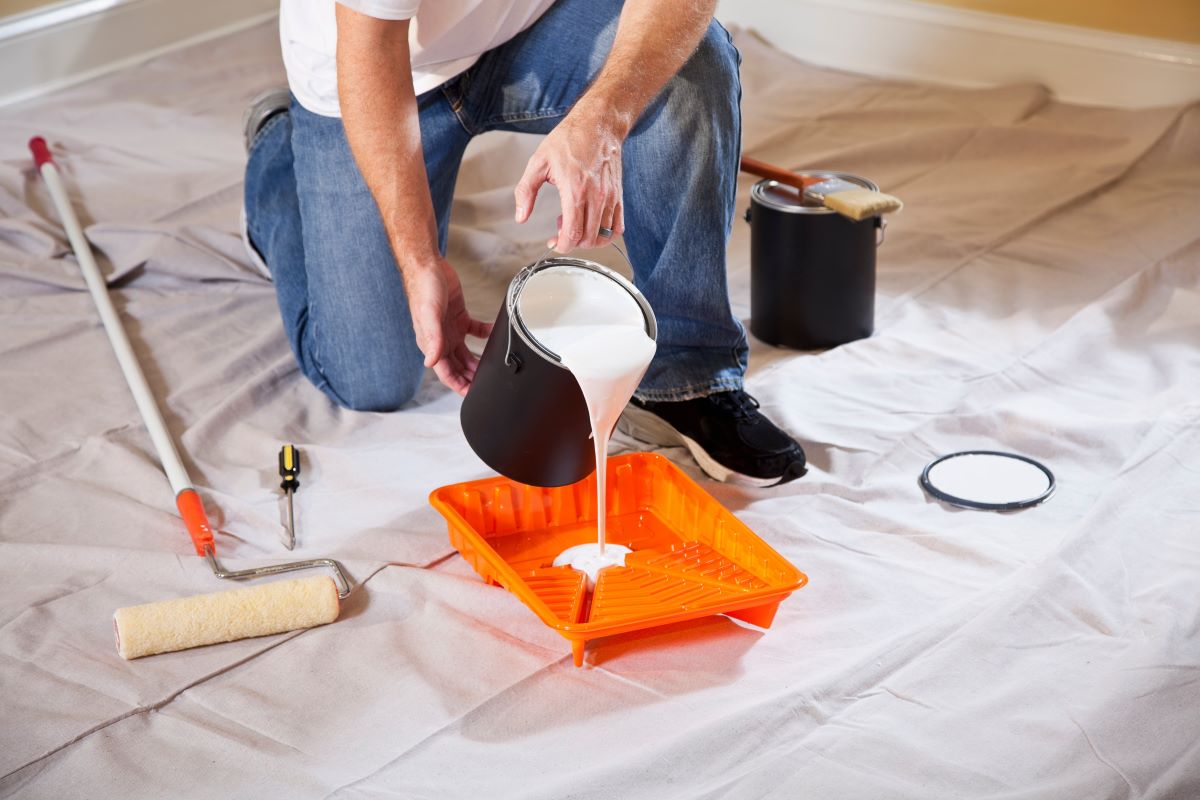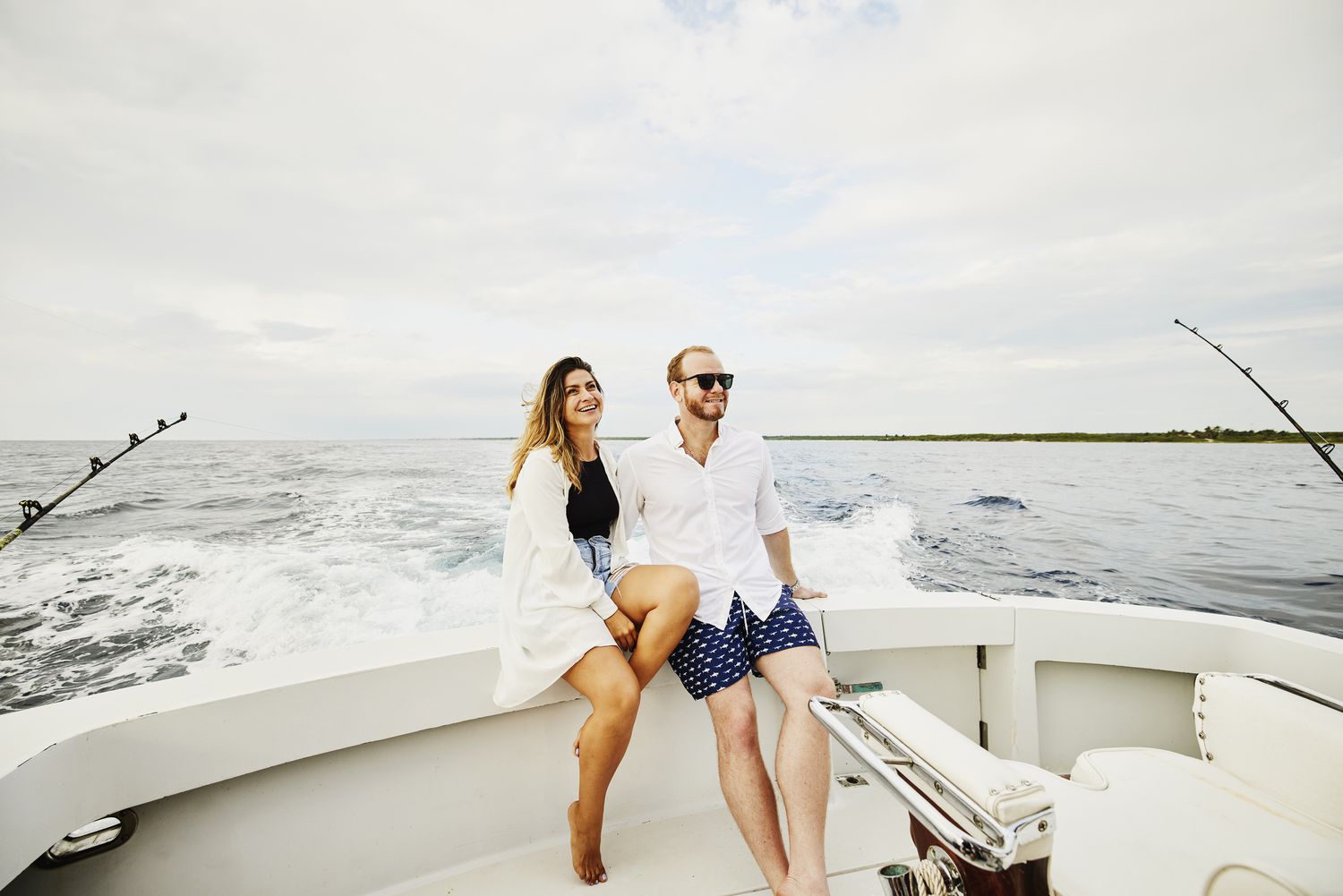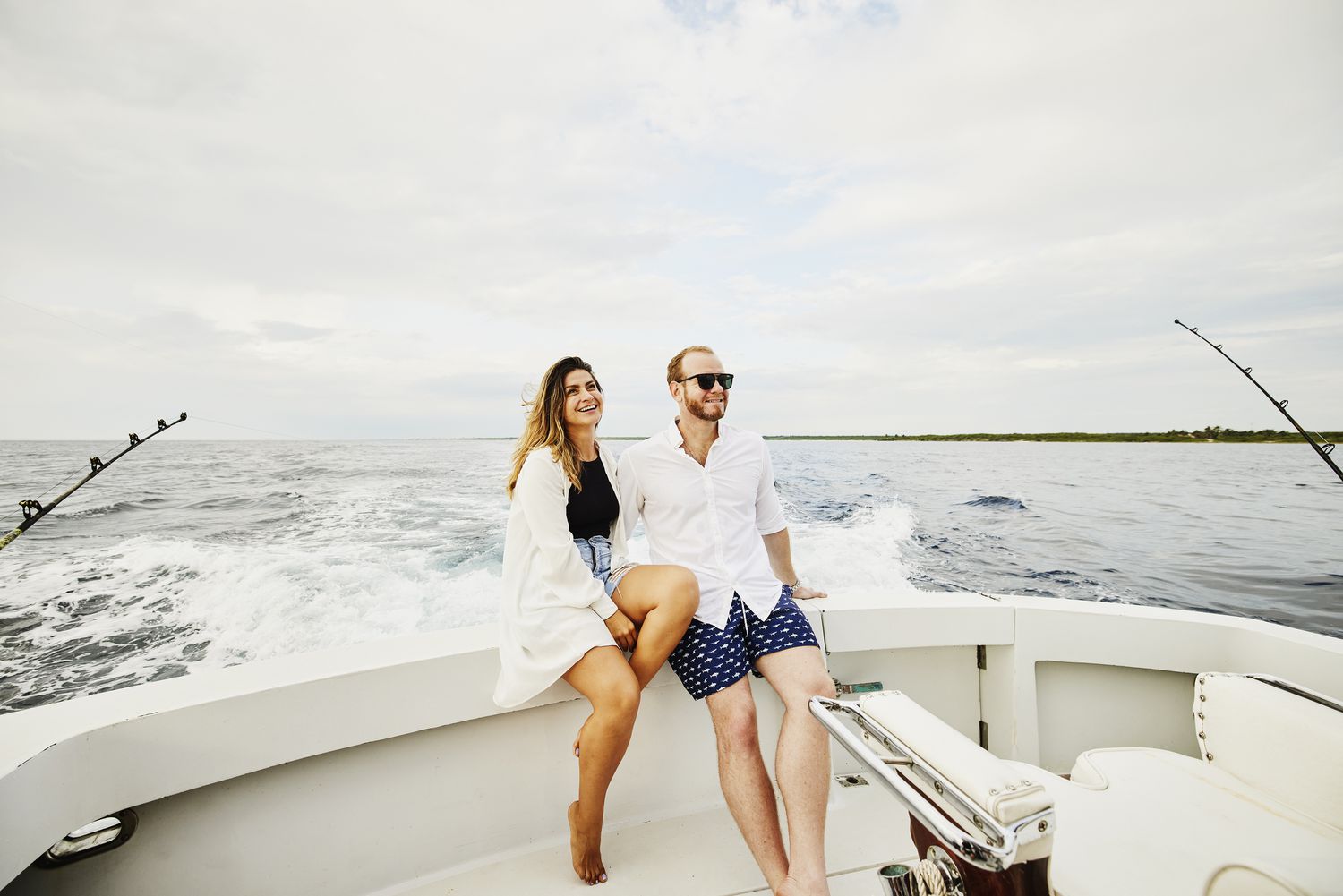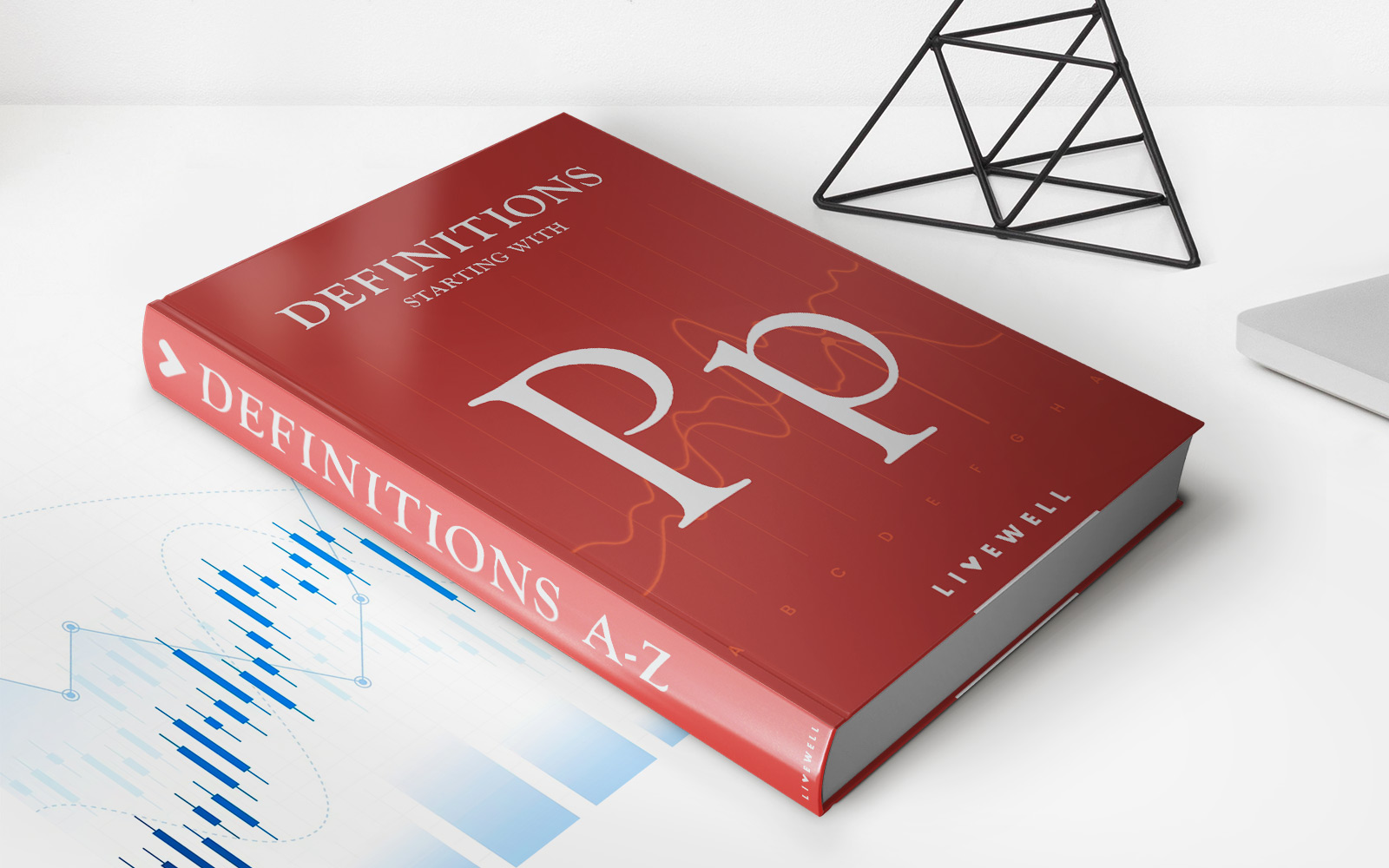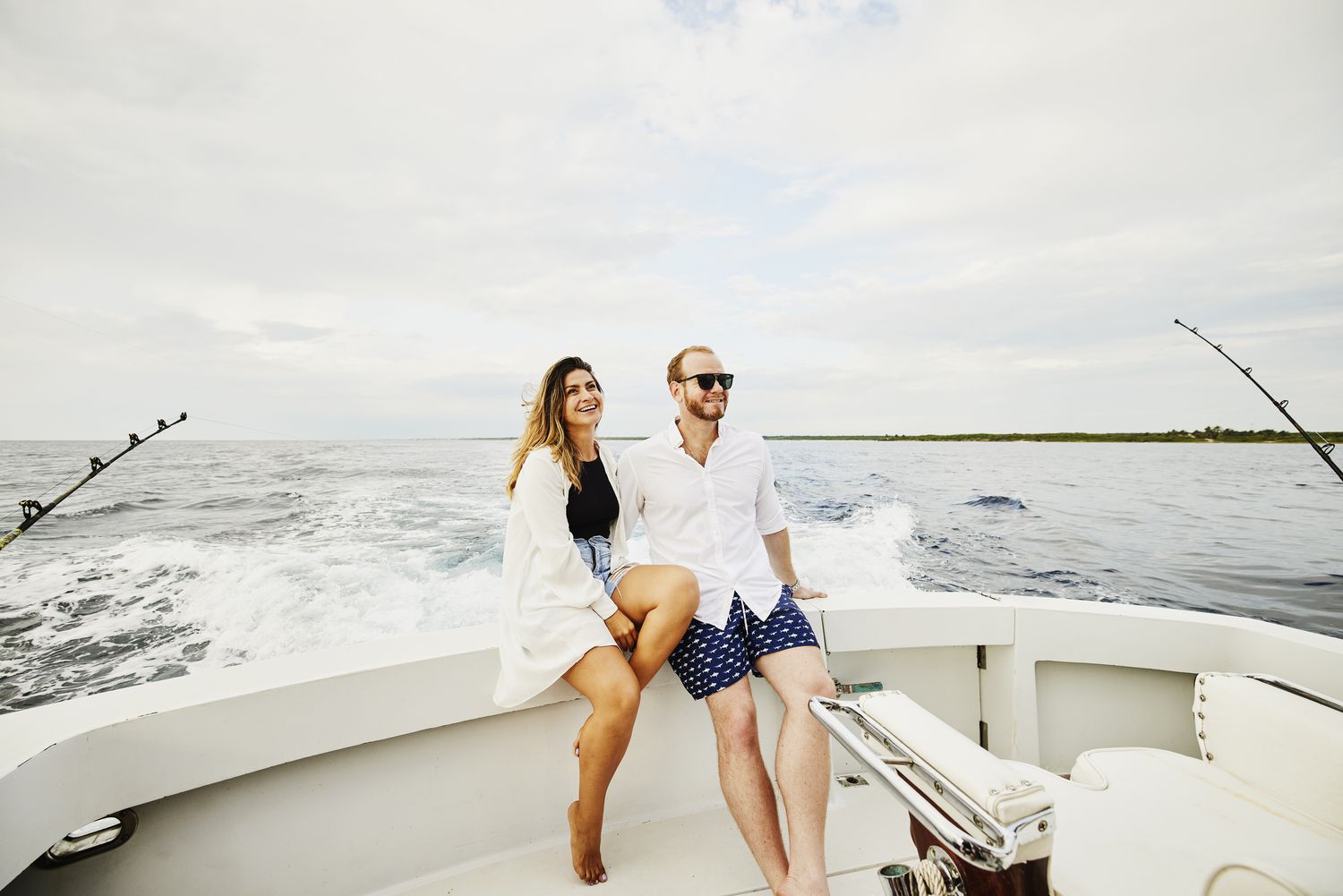

Finance
How Much Is Insurance For A Boat?
Modified: December 30, 2023
Get peace of mind on the water with boat insurance. Discover how much it costs to insure your boat and find the right finance options for your needs.
(Many of the links in this article redirect to a specific reviewed product. Your purchase of these products through affiliate links helps to generate commission for LiveWell, at no extra cost. Learn more)
Table of Contents
Introduction
Welcome to the world of boating, where adventure meets tranquility on the open waters. Whether you’re a seasoned sailor or just dipping your toes into the boating lifestyle, it’s essential to have the right insurance coverage for your beloved vessel. But how much does boat insurance actually cost? In this article, we’ll explore the factors that affect boat insurance premiums and help you understand how to navigate the rough waters when it comes to finding the right coverage at the right price.
Boat insurance is designed to protect boat owners from financial losses due to accidents, theft, or damage to their vessel. Like any other form of insurance, the cost of boat insurance can vary depending on several factors. These factors include the type and value of the boat, the age and condition of the boat, the boating experience of the owner, the coverage options selected, and available discounts.
When determining the cost of boat insurance, insurance companies consider the potential risks associated with insuring a specific boat. Variables such as the boat’s size, speed, horsepower, and construction materials are taken into account. Additionally, the geographical location where the boat will mainly be used and stored can impact insurance premiums. For example, boating on a lake with unpredictable weather conditions or in an area with a high rate of theft may result in higher insurance costs.
It’s important to note that boat insurance is not legally required in all states, but some marinas and loan providers may have insurance requirements that must be met. Even if insurance is not mandatory, it is still highly recommended to protect your investment and ensure peace of mind when heading out on the water.
Now that we understand the importance of boat insurance and the factors that can affect its cost, let’s delve deeper into each of these factors to get a better understanding of how boat insurance premiums are determined.
Factors Affecting Boat Insurance Premiums
When it comes to boat insurance, several factors come into play when determining the premiums for coverage. Understanding these factors can help you better understand why your boat insurance premium may vary from someone else’s. Let’s explore the key factors that can affect boat insurance premiums:
1. Type of Boat: The type of boat you own plays a significant role in determining your insurance premium. Different types of boats have different risk profiles. For example, a small fishing boat may have a lower insurance premium compared to a high-performance speedboat due to the higher risks associated with speed and horsepower.
2. Boat Value: The value of your boat is another crucial factor in determining the insurance premium. Generally, the higher the value of the boat, the higher the insurance premium will be. Insurance companies consider factors such as the make, model, year, and overall condition of the boat when assessing its value.
3. Age and Condition of the Boat: The age and condition of the boat can impact the insurance premium. Older boats or those in poor condition may be more prone to accidents, breakdowns, or damage, which can lead to higher insurance costs.
4. Boating Experience and Safety Measures: Insurance companies take into account your boating experience and any safety measures you have in place when determining premiums. Experienced boaters with a clean boating record and additional safety features such as GPS navigation systems, safety equipment, and anti-theft devices may be eligible for lower insurance rates.
5. Coverage Options: The type and amount of coverage you choose can influence your insurance premium. Basic liability coverage, which covers damage to other boats or property, is typically required. However, additional optional coverages, such as physical damage coverage for your boat or medical payments coverage, will increase your premium.
By considering these factors, insurance companies assess the level of risk associated with insuring a specific boat. It’s essential to discuss these factors with your insurance provider to ensure you have the right coverage tailored to your needs while staying within your budget.
Type of Boat
When it comes to boat insurance, the type of boat you own plays a significant role in determining your insurance premiums. Different types of boats have different risk profiles, which insurance companies take into consideration when calculating the cost of coverage. Let’s take a closer look at how the type of boat can impact your insurance premium:
1. Sailboats: Sailboats are often considered lower risk compared to powerboats. As sailboats rely on wind power rather than an engine, they tend to have lower speeds and are less prone to accidents caused by high speeds. This lower risk profile may result in lower insurance premiums for sailboat owners.
2. Powerboats: Powerboats encompass a wide range of vessels, including fishing boats, pleasure boats, and speedboats. These boats are typically more expensive to insure due to the higher risk associated with their speed, horsepower, and potential for accidents. Insurance premiums for powerboats will vary depending on factors such as the boat’s size, horsepower, and intended use.
3. Pontoons: Pontoons are a popular choice for recreational boating, known for their stability and versatility. Insurance premiums for pontoons are generally lower compared to powerboats due to their lower risk profile. Pontoons are typically used for leisurely cruising and are less likely to engage in high-speed activities that increase the risk of accidents.
4. Personal Watercraft: Personal watercraft, such as Jet Skis and WaveRunners, are small, motorized vessels designed for high-speed water sports. Insurance premiums for personal watercraft can be higher due to the increased risk associated with their maneuverability and potential for accidents or injuries during water sports activities.
These are just a few examples of the different types of boats and how they can impact insurance premiums. It’s important to note that insurance companies may have specific classifications and criteria for different boat types, so it’s best to consult with your insurance provider to determine the exact coverage and premiums for your specific boat type.
In addition to the type of boat, other factors such as the boat’s value, age, and condition, as well as your boating experience and safety measures in place, will also influence your insurance premium. By considering these factors, insurance companies assess the level of risk associated with insuring your boat and provide you with the appropriate coverage.
Boat Value
The value of your boat is an important factor that insurers consider when determining your boat insurance premiums. The higher the value of your boat, the higher the insurance premium is likely to be. Let’s explore how boat value can impact your insurance costs:
1. New Boats: If you own a brand-new boat, its higher market value typically translates into higher insurance premiums. This is because insurance companies need to account for the potential cost of repairing or replacing a new boat in the event of an accident or damage.
2. Used Boats: Used boats are generally valued at a lower price compared to new boats. As a result, insurance premiums for used boats tend to be lower. However, the age and condition of the boat will still play a role in determining the insurance premium.
3. Upgrades and Customizations: If you have made significant upgrades or customizations to your boat, such as adding expensive navigation systems or luxury features, the value of your boat may increase. These added features can impact your insurance premium since the increased value will require additional coverage.
4. Market Value vs. Agreed Value: When insuring your boat, you may have the option to choose between market value and agreed value coverage. Market value is determined by the current market price of your boat, while agreed value is a pre-determined amount agreed upon by you and the insurer. Agreed value coverage offers more certainty as to the payout in the event of a total loss, but it may result in higher insurance premiums.
To accurately assess the value of your boat, insurers take into account various factors such as the make, model, year, and overall condition of the vessel. It’s important to provide accurate and up-to-date information about your boat to ensure that it is appropriately valued and insured.
Remember, the value of your boat can impact both the cost of coverage and the level of coverage you will need. It’s essential to review the replacement value of your boat periodically and adjust your insurance coverage accordingly. By understanding the value of your boat, you can make informed decisions to protect your investment and ensure that you have the right coverage in place.
Age and Condition of the Boat
The age and condition of your boat are important factors that insurance companies consider when determining boat insurance premiums. The insurance premium can be influenced by various factors related to the age and condition of the boat. Let’s take a closer look at how these factors can impact your insurance costs:
1. Age of the Boat: Generally, older boats may have a higher risk of mechanical failure, structural issues, or wear and tear. This increased risk can result in higher insurance premiums. Insurance companies take into account the age of the boat to assess the potential likelihood of claims arising from age-related issues.
2. Condition of the Boat: The overall condition of the boat plays a significant role in determining insurance premiums. A well-maintained boat in good condition is less likely to experience accidents or breakdowns, leading to lower insurance costs. Regular maintenance, including inspections, repairs, and proper storage, can contribute to lower insurance premiums.
3. Previous Claims History: Insurance companies may consider the previous claims history of the boat to assess the risk involved in insuring it. If the boat has a history of frequent or costly claims, insurance companies may charge higher premiums to compensate for the increased risks.
4. Survey Reports: In some cases, insurance companies may require a survey report to assess the condition of an older boat. A survey report is conducted by a professional surveyor who evaluates the boat’s structure, equipment, and systems. If the survey report reveals any significant issues or deficiencies, it may affect the insurance premium or even the insurability of the boat.
It’s important to provide accurate information about the age and condition of your boat when applying for insurance. Some insurance companies may require documentation, such as maintenance records or boat survey reports, to verify the condition of the vessel.
Regular maintenance and proper care can not only help keep your boat in good condition but also potentially lower your insurance premiums. By investing time and resources into the upkeep of your boat, you demonstrate to insurers that you are a responsible and proactive boat owner, which can lead to more favorable insurance rates.
Remember, as your boat ages, it becomes even more important to stay on top of maintenance and repairs to maintain its value and insurability. Schedule regular inspections, address any issues promptly, and keep a detailed record of maintenance activities. By doing so, you can help protect your investment and potentially reduce your insurance costs.
Boating Experience and Safety Measures
When it comes to boat insurance premiums, your boating experience and the safety measures you have in place can have a significant impact. Insurance companies take these factors into account because they can directly affect the likelihood of accidents or damage. Here’s how boating experience and safety measures can influence your insurance costs:
1. Boating Experience: Insurance companies consider your level of boating experience when determining your insurance premiums. Typically, more experienced boaters who have a clean boating record are considered lower risk and may qualify for lower insurance rates. On the other hand, less experienced boaters or those with a history of accidents or violations may face higher premiums.
2. Boating Courses and Certifications: Taking boating safety courses or obtaining certifications can demonstrate your commitment to safety and responsible boating. Some insurance companies offer discounts for completing accredited boating safety courses, as it reduces the likelihood of accidents or incidents. By investing in education and training, you can not only enhance your boating skills but also potentially lower your insurance premiums.
3. Safety Equipment: Insurance companies often offer discounts for having safety equipment on board your boat. Basic safety equipment, such as life jackets, fire extinguishers, distress signals, and navigation lights, are not only essential for boating safety but may also help reduce your insurance premium. Additional safety features, such as GPS navigation systems, boat alarms, and anti-theft devices, can further decrease your insurance costs.
4. Boat Storage: How you store your boat when it’s not in use can also impact your insurance premiums. Storing your boat in a secure location, such as a locked garage or a marina with security measures, can lower your insurance costs. This is because secure storage reduces the risk of theft or damage, resulting in a lower likelihood of insurance claims.
5. Boating Safety Record: Your personal boating safety record plays a significant role in insurance premiums. Insurance companies may review your claims history, including any previous accidents or incidents, to assess the risk associated with insuring your boat. Maintaining a clean boating record by practicing safe boating habits and adhering to all boating regulations can help lower your insurance premiums.
By demonstrating your boating experience and implementing safety measures, you not only prioritize the safety of yourself and others but also potentially qualify for insurance discounts. Before purchasing boat insurance, it’s important to discuss your boating experience and safety measures with your insurance provider. They can guide you on the specific requirements and potential discounts available based on your individual circumstances.
Coverage Options
When it comes to boat insurance, there are several coverage options to consider. The specific coverage options you choose will impact your insurance premiums. It’s important to understand these options to ensure that your boat is adequately protected. Let’s explore the main coverage options available for boat insurance:
1. Liability Coverage: Liability coverage is the foundation of boat insurance and typically required by law. It protects you financially if you cause harm to others or damage their property while operating your boat. This coverage helps cover legal expenses, medical bills, and property damage claims. Liability coverage is essential for protecting your assets in the event of an accident.
2. Physical Damage Coverage: Physical damage coverage protects your boat against physical damage caused by accidents, natural disasters, theft, or vandalism. It is usually divided into two components:
– Collision Coverage: Collision coverage provides compensation for repairs or replacement of your boat if it’s involved in a collision with another object, such as another boat, a dock, or a submerged object.
– Comprehensive Coverage: Comprehensive coverage reimburses you for damages to your boat resulting from non-collision incidents like fire, theft, vandalism, storms, or other covered perils.
3. Medical Payments Coverage: Medical payments coverage, also known as “med pay,” covers medical expenses for you and your passengers if you’re injured in a boating accident. It can help cover costs for hospital bills, doctor visits, surgery, and other eligible medical expenses, regardless of who is at fault.
4. Optional Additional Coverages: Depending on your needs, there are additional coverages you can consider adding to your boat insurance policy. These may include:
– Uninsured/Underinsured Boater Coverage: This coverage protects you if you’re involved in an accident with a boater who doesn’t have insurance or has insufficient coverage. It helps cover your medical expenses and damages to your boat.
– Towing and Assistance Coverage: This coverage can help cover the costs of towing your boat in the event of a breakdown or mechanical failure while on the water.
– Personal Effects Coverage: Personal effects coverage provides coverage for personal belongings on your boat, such as fishing equipment, electronic devices, and water sports gear, in case of loss or damage.
– Trailer Coverage: If you transport your boat using a trailer, trailer coverage can protect against theft, damage, or liability while hauling your boat.
Insurance companies offer different levels of coverage and additional options, so it’s important to review and understand the specific offerings of each policy. Take the time to discuss your coverage options with your insurance provider to ensure that you have the right protections in place for your boating needs.
Liability Coverage
Liability coverage is a fundamental component of boat insurance that protects boat owners financially in the event of accidents involving their vessel. This coverage is typically required by law in most states and is designed to cover the costs associated with injuries to others or damage to their property caused by your boat. Let’s explore liability coverage in more detail:
How Liability Coverage Works:
Liability coverage comes into play when you are found responsible for causing harm or property damage while operating your boat. It helps cover the legal expenses, medical bills, and property repair costs incurred by the injured party. Liability coverage can protect you from costly lawsuits and financial liabilities that may arise from a boating accident.
Types of Liability Coverage:
Boat insurance policies typically offer two types of liability coverage:
1. Bodily Injury Liability: This type of coverage pays for medical expenses, hospital bills, rehabilitation costs, and potentially even lost wages of individuals injured in an accident caused by your boat. It can also cover legal fees if you are sued as a result of the accident.
2. Property Damage Liability: Property damage liability coverage safeguards you against repair or replacement costs for someone else’s property damaged in a boating accident caused by you. This can include damage to other boats, docks, buoys, or any other property involved in the accident.
Coverage Limits and Considerations:
Liability coverage typically has predetermined coverage limits, and it’s important to carefully select coverage limits that adequately protect your assets. Insurance providers offer different coverage limits, so it’s important to assess your needs and consult with your insurance agent to determine the appropriate coverage amount for your specific situation.
It’s worth mentioning that boat liability coverage usually extends to a certain radius from the designated navigational area. If you plan to boat outside of your usual area, it’s essential to discuss this with your insurance provider to ensure you have the proper coverage wherever your boating adventures take you.
Importance of Liability Coverage:
Liability coverage is crucial for boat owners as it provides financial protection in the event of unforeseen accidents or incidents. A serious boating accident can result in substantial medical expenses, legal fees, and property damage costs. Without liability coverage, you could be personally responsible for covering these expenses, which can be financially devastating.
Additional Considerations:
It’s important to note that liability coverage only protects you from the financial consequences of accidents caused by your boat. It does not cover damage to your own boat or your personal injuries. To protect yourself, your passengers, and your boat, it’s advisable to consider additional coverage options such as physical damage coverage and medical payments coverage.
By selecting the appropriate liability coverage, you can have the peace of mind knowing that you’re financially protected against the potential consequences of accidents involving your boat. Take the time to review your policy, understand the coverage limits, and consult with your insurance provider to ensure you have the right liability coverage for your boating needs.
Physical Damage Coverage
Physical damage coverage is an essential component of boat insurance that protects your vessel against damage or loss resulting from accidents, natural disasters, theft, vandalism, and other covered perils. This coverage helps ensure that you have financial protection for the repair or replacement cost of your boat. Let’s explore physical damage coverage in more detail:
Types of Physical Damage Coverage:
Physical damage coverage typically consists of two main components:
1. Collision Coverage: Collision coverage helps cover the cost of repairing or replacing your boat if it is involved in a collision with another boat, a dock, a submerged object, or any other covered collision incident. This coverage is crucial for addressing damage caused by accidents on the water.
2. Comprehensive Coverage: Comprehensive coverage provides protection for your boat against damages resulting from non-collision incidents. This can include damage from fire, theft, vandalism, storms, flooding, or other covered perils. Comprehensive coverage offers coverage beyond collisions, ensuring that your boat is protected from a wide range of risks.
How Physical Damage Coverage Works:
In the event of covered damage to your boat, physical damage coverage helps cover the necessary repairs or the replacement cost of your vessel. The coverage amount is based on the agreed or market value of your boat, taking into account factors such as the make, model, age, and condition of the vessel. You will typically be responsible for paying a deductible before the coverage applies.
Factors to Consider:
When selecting physical damage coverage for your boat insurance, there are a few factors to consider:
1. Boat Value: Ensure that your coverage limits are sufficient to cover the replacement cost of your boat in the event of a total loss. Consider factors such as the boat’s market value, age, and any upgrades or customizations that may affect its value.
2. Payment Basis: Physical damage coverage is typically provided on an agreed value or actual cash value (ACV) basis. Agreed value coverage ensures that you receive an agreed-upon sum in the event of a total loss. ACV coverage takes depreciation into account and provides compensation based on the boat’s current market value.
3. Deductible: Your insurance policy will specify the deductible, which is the amount you must pay out of pocket before the insurance coverage applies. Consider your financial situation and select a deductible amount that you are comfortable with.
Importance of Physical Damage Coverage:
Physical damage coverage is vital for safeguarding your investment in your boat. Repairing or replacing a damaged boat can often be costly, and having the appropriate coverage in place can help protect you from financial burdens. Whether it’s a collision, storm damage, theft, or vandalism, physical damage coverage ensures that you have the necessary financial protection to get your boat back on the water.
It’s crucial to carefully review your policy and discuss your coverage needs with your insurance provider. By understanding the specifics of your physical damage coverage, you can make informed decisions about the coverage limits, deductibles, and payment basis that best suit your individual circumstances.
Medical Payments Coverage
Medical payments coverage, also known as “med pay,” is an important component of boat insurance that provides coverage for medical expenses incurred by you and your passengers in the event of a boating accident or injury. This coverage ensures that you have financial protection for necessary medical treatments resulting from boating-related incidents. Let’s take a closer look at medical payments coverage:
How Medical Payments Coverage Works:
Medical payments coverage is designed to cover the medical expenses for you and your passengers, regardless of who is at fault in a boating accident. If you or your passengers sustain injuries while on your boat, medical payments coverage helps cover the costs associated with medical treatment, hospitalization, ambulance fees, and related medical expenses. It provides timely assistance in obtaining necessary medical care without waiting for a liability claim to be settled.
Scope of Coverage:
Medical payments coverage typically includes the following:
1. Emergency Medical Treatment: This coverage helps cover the immediate medical expenses for injuries sustained on your boat. It includes emergency room visits, diagnostic tests, and any necessary medical treatments required to stabilize the condition of the injured parties.
2. Medical Costs: Medical payments coverage helps cover ongoing medical treatments related to the boating accident, such as consultations, follow-up visits, physical therapy, medications, and other medical services deemed necessary for the recovery of the injured individuals.
3. Potential Additional Expenses: In addition to medical expenses, medical payments coverage may extend to cover additional costs, such as prosthetic devices, dental treatments resulting from an accident, and funeral expenses in the unfortunate event of a fatality.
Coverage Limits:
Insurance policies typically specify the maximum amount of medical payments coverage available per person and per incident. Coverage limits can vary, and it’s important to select limits that are appropriate for your specific needs. Consider factors such as the number of people typically on board your boat and the potential medical costs in your area to ensure adequate coverage.
Relationship to Other Coverages:
It’s important to understand that medical payments coverage is separate from liability coverage. While liability coverage focuses on protecting you from financial responsibility for injuries or damages to others, medical payments coverage is designed to cover the medical expenses of you and your passengers. Medical payments coverage applies regardless of who is at fault in the boating accident.
Benefits of Medical Payments Coverage:
Medical payments coverage offers several benefits, including:
1. Prompt Medical Care: Medical payments coverage ensures that you and your passengers have access to immediate medical care in the event of an accident, without the need to wait for lengthy liability claim settlements.
2. Financial Protection: Medical expenses resulting from boating accidents can quickly add up. Having medical payments coverage helps provide financial protection and peace of mind in knowing that necessary medical treatments are covered.
3. Enhanced Passenger Protection: Medical payments coverage extends to cover the medical expenses of your passengers, ensuring that they receive the necessary care without added financial burden.
Medical payments coverage is an important aspect of boat insurance, providing essential coverage for medical expenses arising from boating accidents or injuries. It’s crucial to review your policy and discuss the available limits and coverage with your insurance provider to ensure that your medical payments coverage adequately protects you and your passengers.
Optional Additional Coverages
In addition to the essential coverages like liability, physical damage, and medical payments, boat insurance policies often offer optional coverages that allow you to customize your policy to meet your specific needs. These optional coverages provide additional protection and peace of mind in certain situations. Let’s explore some of the common optional coverages available for boat insurance:
1. Uninsured/Underinsured Boater Coverage: This coverage protects you if you’re involved in an accident with a boater who either doesn’t have insurance or has insufficient coverage. It helps cover medical expenses and damages to your boat when the at-fault party cannot fully compensate you.
2. Towing and Assistance Coverage: Towing and assistance coverage provides reimbursement for the costs associated with towing your boat to a repair facility or safe location in the event of a breakdown or mechanical failure. This coverage can save you from expensive towing fees and ensure that you receive prompt assistance when you need it most.
3. Personal Effects Coverage: Personal effects coverage offers protection for personal belongings on your boat, such as fishing equipment, water sports gear, and electronic devices. It helps cover the cost of repairing or replacing these items if they are damaged, stolen, or lost.
4. Trailer Coverage: If you transport your boat using a trailer, trailer coverage provides protection for the trailer itself. This coverage can help cover the costs of repairs or replacement if your trailer is damaged, stolen, or involved in an accident during transportation.
5. Fishing Equipment Coverage: Fishing equipment coverage specifically focuses on protecting your valuable fishing gear. It helps cover the cost of repairing or replacing fishing equipment, such as rods, reels, tackle boxes, and other related items, if they are damaged, stolen, or lost.
6. Wreckage Removal Coverage: Wreckage removal coverage covers the expense of removing debris or wreckage in the event of an accident or other covered incident. It ensures that you are not left with the burden of paying for the removal of your boat or any other objects involved in the accident.
It’s important to note that the availability of these optional coverages may vary depending on the insurance provider and the specific policy. The costs associated with these coverages will depend on various factors, including the coverage limits you select.
When considering optional coverages, it’s recommended to evaluate your individual needs and assess the risks you may face while boating. Discussing these options with your insurance provider can help you determine which optional coverages are appropriate for you and your boating lifestyle.
By customizing your insurance policy with optional coverages, you can ensure that you have the comprehensive protection you need while enjoying the waters with peace of mind.
Discounts and Savings
When it comes to boat insurance, there are several discounts and savings opportunities available that can help you reduce your insurance premiums while still maintaining the coverage you need. Insurance providers offer various discounts based on factors such as your boating experience, safety measures, and policy choices. Let’s explore some common discounts and savings options:
1. Boating Safety Courses: Completing a boating safety course from a recognized organization can often make you eligible for discounts. These courses provide valuable knowledge and demonstrate your commitment to safe boating practices, leading to potential savings on your insurance premiums.
2. Multi-Policy Discount: Insuring your boat with the same insurance company that covers your home, auto, or other policies can often result in a multi-policy discount. Bundling your insurance policies with one provider can lead to significant savings.
3. Lay-Up Period Discount: If you live in an area where boating is seasonal, you may be eligible for a lay-up period discount. This discount allows you to reduce or suspend coverage during the months when your boat is not in use, typically during the winter season. During this period, your boat is protected against risks like fire and theft while saving on premium costs.
4. Safe Boating Record: Maintaining a clean boating record, free from accidents or claims, can often result in discounts on your insurance premiums. Insurance companies reward responsible boaters with lower rates, as they are considered lower risk.
5. Safety Equipment: Equipping your boat with safety features and devices, such as GPS navigation systems, alarms, fire extinguishers, and anti-theft devices, can make you eligible for discounts. These safety measures reduce the risk of accidents, theft, and damage, leading to potential savings on your premiums.
6. Boating Experience: Insurance providers may offer discounts based on your years of boating experience. The more experienced you are as a boater, the lower the risk you present, resulting in possible savings on your insurance premiums.
7. Claims-Free Discount: Maintaining a claims-free history can lead to discounts on your insurance premiums. Insurance companies reward customers who have not made any claims by providing reduced rates as an incentive to continue practicing safe boating habits.
8. Membership Discounts: Membership in certain organizations, such as boating associations or clubs, may offer access to exclusive discounts on boat insurance. Check with your insurance provider to see if your membership qualifies for any savings opportunities.
It’s important to note that the availability and amount of these discounts can vary among insurance providers. When shopping for boat insurance, inquire about the available discounts and any specific requirements or criteria that need to be met to qualify for them.
By taking advantage of these discounts and savings opportunities, you can potentially reduce the cost of your boat insurance while still maintaining comprehensive coverage. Discuss these options with your insurance agent to ensure that you’re maximizing your savings and getting the best value for your insurance premiums.
Conclusion
Boat insurance is a vital investment for any boat owner, providing financial protection and peace of mind in the face of unforeseen accidents or unexpected damages. Understanding the factors that affect boat insurance premiums is essential for navigating the process of securing the right coverage at the right price.
Factors such as the type of boat, boat value, age and condition of the boat, boating experience, safety measures, and coverage options all play a role in determining insurance premiums. By carefully considering these factors, you can tailor your insurance policy to meet your specific needs and budget while ensuring adequate protection for your valuable asset.
Choosing the right coverage options, such as liability coverage, physical damage coverage, and medical payments coverage, is crucial for comprehensive protection. Optional additional coverages can further enhance your policy by providing coverage for uninsured boaters, towing and assistance, personal effects, trailer, and fishing equipment.
Boat insurance policyholders can also take advantage of various discounts and savings opportunities offered by insurance providers. By completing boating safety courses, maintaining a safe boating record, equipping your boat with safety features, or bundling policies, you can potentially reduce your insurance premiums and save money.
In conclusion, boat insurance is not only necessary but also beneficial for boat owners. It protects your investment and provides financial security in case of accidents, damages, or personal injuries. By understanding the factors affecting boat insurance premiums, exploring coverage options, and taking advantage of available discounts, you can ensure that you have the right coverage and enjoy your boating adventures with peace of mind.
